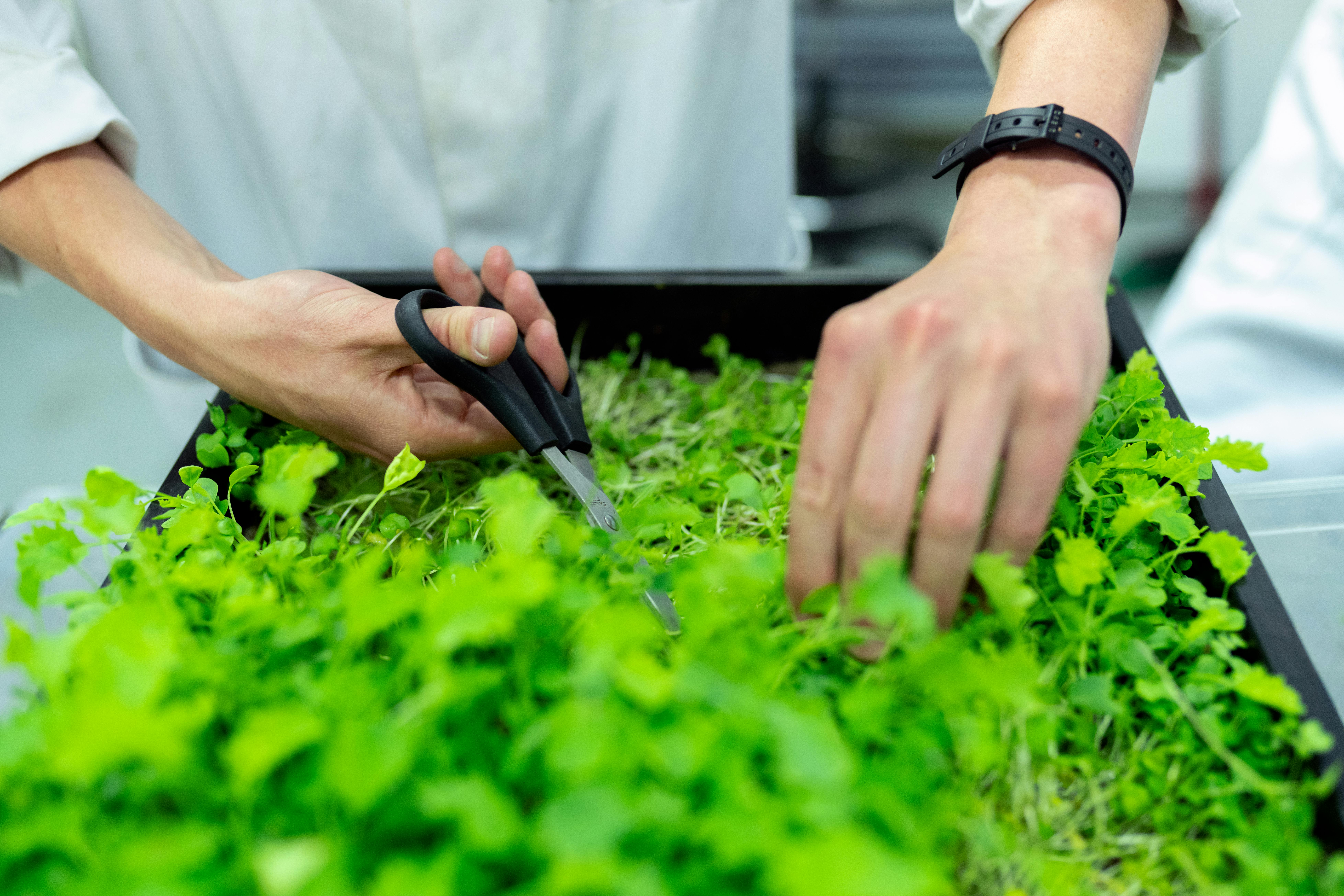In this article, you will explore the key principles of sustainable urban gardening. With the rise of urbanization and the increasing need for green spaces, sustainable urban gardening offers a solution to create thriving ecosystems in our cities. By implementing practices such as composting, water conservation, biodiversity, and community involvement, sustainable urban gardening not only beautifies our urban spaces but also promotes environmental sustainability and food security. So, whether you are a seasoned gardener or a beginner, join us as we embark on a journey to understand the principles that make urban gardening sustainable and impactful.

Understanding Sustainable Urban Gardening
In recent years, the concept of sustainable urban gardening has gained tremendous popularity among city dwellers. With the increasing awareness about environmental conservation and the desire for locally grown food, sustainable urban gardening offers an innovative and practical solution to create green spaces within cities. This article aims to provide a comprehensive understanding of sustainable urban gardening, its benefits, and strategies to implement it successfully.
Definition and Concept
Sustainable urban gardening refers to the practice of cultivating plants and growing food in urban areas using environmentally friendly and resource-efficient techniques. It focuses on harmonizing nature and the urban environment, making the best use of limited space and resources available in cities. By implementing sustainable practices, urban gardens can contribute to urban biodiversity, reduce pollution, mitigate the heat island effect, and promote community engagement.
Benefits of Sustainable Urban Gardening
Environmental Benefits: Sustainable urban gardening plays a significant role in enhancing urban ecosystems. By creating green spaces, it helps filter air pollutants, absorb carbon dioxide, and release oxygen, improving the overall air quality. Urban gardens also help to reduce heat absorption, combat the heat island effect, and support water management by reducing stormwater runoff.
Access to Fresh and Healthy Food: One of the key benefits of sustainable urban gardening is the ability to grow fresh and nutritious food locally. By growing fruits, vegetables, and herbs within the city, residents can have easy access to organic produce, promoting healthy eating habits and reducing the carbon footprint associated with transporting food long distances.
Community Engagement: Sustainable urban gardening provides an opportunity for communities to come together, collaborate, and build strong social connections. Gardening activities, such as shared gardening spaces and educational workshops, create a sense of belonging and instill a greater appreciation for nature and the environment.
Educational and Recreational Value: Urban gardens serve as outdoor classrooms, allowing people of all ages to learn about plants, sustainability, and the food system. They provide a source of relaxation, stress relief, and physical exercise, contributing to the overall well-being of individuals.
Promotion of Local Food Systems: Sustainable urban gardening supports the development of local food systems by reducing reliance on imported food. It encourages small-scale farming and promotes the consumption of locally grown produce, strengthening local economies and reducing the carbon emissions associated with long-distance transportation.
Choosing Suitable Plants
Selecting the right plants is crucial for the success of sustainable urban gardening. Here are two important aspects to consider:
Native and Indigenous Species
When choosing plants for your urban garden, consider using native and indigenous species. These plants have adapted to the local climate and soil conditions, making them more resilient and requiring fewer resources to thrive. Native plants also support local wildlife, including bees and butterflies, by providing food and habitat.
Adaptability to Urban Environment
Urban environments often present challenges for plant growth, such as limited space, poor soil quality, and inadequate sunlight. Therefore, selecting plants that can adapt to these conditions is essential. Look for varieties that are known to tolerate urban settings, such as compact or dwarf varieties for limited space and shade-tolerant plants for areas with minimal sunlight.

Garden Design and Layout
Efficient garden design and layout are crucial for maximizing the productivity and sustainability of urban gardens. Here are some key strategies to consider:
Utilizing Vertical Space
To make the most of limited space, consider utilizing vertical gardening techniques. Install trellises, vertical planters, or living walls to grow climbing plants or vegetables that can be trained to grow upwards. Vertical gardening not only saves space but also creates an appealing aesthetic and improves air circulation within the garden.
Maximizing Available Sunlight
Sunlight is essential for plant growth, so it’s important to maximize the amount of sunlight reaching your urban garden. Observe the patterns of sunlight throughout the day and position your plants accordingly. Consider using reflective surfaces or mirrors to redirect sunlight to shaded areas. Additionally, avoid planting tall or dense plants that could shade others.
Companion Planting
Implementing companion planting techniques can enhance the productivity and health of your urban garden. By planting complementary plants together, you can create beneficial relationships, such as repelling pests, attracting pollinators, or improving soil fertility. For example, pairing tomatoes with basil or marigolds helps repel pests and improves tomato flavor.
Intercropping
Intercropping involves growing different crops in close proximity to optimize space and resources. By planting crops with varying growth rates or complementary root structures, you can maximize yield and minimize competition for nutrients and space. For example, planting fast-growing greens alongside slower-growing root vegetables ensures efficient use of space.
Crop Rotation
Implementing crop rotation is crucial to maintain soil health and prevent the buildup of pests and diseases. Rotate crops from different plant families in different areas of the garden each year to allow the soil to recover and minimize pest and disease carryover. This practice also helps maintain soil fertility and reduces the need for synthetic inputs.
Soil Management
Proper soil management is fundamental for the success of sustainable urban gardening. Consider the following strategies:
Soil Testing and Analysis
Start by testing your soil to determine its nutrient composition and pH level. Soil testing kits or professional laboratory analysis can provide valuable information to help you make informed decisions about soil amendments. Adjusting the soil pH and replenishing essential nutrients can support plant growth and overall garden health.
Composting
Composting is an effective way to produce organic matter and nutrient-rich soil amendments. Set up a composting system in your urban garden to recycle kitchen scraps, yard waste, and other organic materials. Compost adds beneficial microorganisms, improves soil structure, and enhances water-holding capacity, creating a healthy environment for plants.
Organic Fertilizers
In sustainable urban gardening, it is crucial to prioritize the use of organic fertilizers. Avoid synthetic chemical fertilizers that can harm the environment and contribute to water pollution. Instead, opt for organic alternatives such as compost tea, worm castings, or well-aged manure. These natural fertilizers provide slow-release nutrients and improve soil health.
Mulching
Mulching is a simple yet effective soil management technique that conserves moisture, suppresses weed growth, and improves soil temperature regulation. Apply a layer of organic mulch, such as straw, wood chips, or leaves, around your plants. Mulch also helps prevent soil erosion and adds organic matter to the soil as it decomposes.

Water Conservation
Water conservation is a critical aspect of sustainable urban gardening. Implement the following strategies to optimize water usage:
Rainwater Harvesting
Harvesting rainwater is an excellent way to supplement your irrigation needs. Set up rain barrels or cisterns to collect rainwater from the rooftops. This collected water can be used to irrigate your garden during dry periods, reducing the demand for treated municipal water and conserving resources.
Drip Irrigation Systems
Drip irrigation systems are highly efficient and minimize water waste by delivering water directly to the plant roots. Install drip irrigation systems or use drip irrigation hoses to ensure water is distributed accurately and effectively. These systems also reduce the risk of diseases by minimizing foliage wetness.
Water-Efficient Planting Techniques
To optimize water usage, implement water-efficient planting techniques. Group plants with similar watering needs together. This ensures that water is applied appropriately without overwatering or underwatering certain plants. Additionally, consider using self-watering containers or planters with built-in reservoirs to reduce water evaporation and frequency of watering.
Integrated Pest Management
Preventing and managing pests in a sustainable manner is crucial for the long-term health and productivity of your urban garden. Consider the following strategies:
Identification and Prevention
Regularly inspect your plants for signs of pests or diseases. Early identification allows for timely action to prevent rapid infestation. Implement preventive measures like providing adequate airflow, removing weeds, and maintaining proper plant nutrition to enhance plant resistance and minimize pest attraction.
Biological and Organic Pest Control
Implementing biological pest control methods can help maintain a balance between pests and beneficial insects. Introduce predator insects, such as ladybugs or praying mantises, or use biological agents like nematodes or Bacillus thuringiensis to control pests naturally. Organic pest control methods, such as insecticidal soaps or neem oil, can also be effective with minimal environmental impact.
Avoidance of Harmful Chemicals
Avoid the use of harmful chemical pesticides or herbicides in your urban garden. These chemicals can harm beneficial insects, contaminate soil and water, and pose risks to human and animal health. Instead, focus on natural alternatives and cultural practices that minimize pest pressure, such as crop rotation, intercropping, and companion planting.
Energy Efficiency
Efficient use of energy is essential for sustainable urban gardening. Incorporate the following practices to reduce energy consumption:
Utilizing Solar Energy
Take advantage of solar energy by installing solar panels to power garden lights, water pumps, or other energy-consuming elements. Solar energy is renewable, reduces your carbon footprint, and can significantly decrease energy costs in the long run.
LED Grow Lights
If growing plants indoors or in low-light areas, opt for LED grow lights. LED lights are energy-efficient, emit little heat, and provide the optimal light spectrum for plant growth. They are long-lasting and cost-effective, ensuring your plants receive adequate light without unnecessary energy waste.
Energy-Efficient Watering Systems
Upgrade to energy-efficient watering systems. Consider using low-energy drip irrigation, which minimizes water waste and reduces energy needed for pressurized irrigation systems. Additionally, choose watering systems with timers or moisture sensors to ensure irrigation is controlled efficiently and conservatively.
Waste Reduction and Recycling
Reducing waste and implementing recycling practices are important aspects of sustainable urban gardening:
Composting
As mentioned earlier, composting plays a crucial role in waste reduction and recycling. By composting organic waste, you divert it from landfills, reduce methane emissions, and create valuable soil amendments. Set up dedicated compost bins or worm composting systems to facilitate the decomposition process.
Repurposing Materials
Incorporate repurposed materials into your urban garden to minimize waste. Consider using recycled containers, such as old buckets or wooden pallets, as planters. Repurpose discarded materials like bricks or stones to create paths or garden borders. By giving new life to these materials, you contribute to waste reduction and create a unique, sustainable garden space.
Recycling Containers and Packaging
Make a conscious effort to recycle containers and packaging materials associated with gardening. Ensure that plastic pots, seedling trays, or soil bags are properly cleaned and sorted for recycling. By participating in recycling programs, you contribute to a circular economy and reduce the environmental impact of plastic waste.
Community Engagement
Building a sense of community is a key aspect of sustainable urban gardening. Consider the following activities to engage with your community:
Creating Shared Gardening Spaces
Collaborate with neighbors or local organizations to create shared gardening spaces or community gardens. These shared spaces promote cooperation, knowledge exchange, and a stronger sense of community. Utilize the available land and resources collectively, and encourage participation from diverse groups within the community.
Educational Workshops
Organize educational workshops or gardening classes to share knowledge and skills with others. Offer guidance on sustainable gardening practices, plant propagation, composting, or other relevant topics. These workshops can empower individuals to start their own urban gardens and promote sustainable living within the community.
Supporting Local Food Systems
Collaborate with local farmers, markets, or community-supported agriculture initiatives to support and promote the local food system. Engage in farmers’ markets or community-supported agriculture programs to showcase and share the produce from your urban garden. Encourage residents to buy local and support sustainable agriculture practices.
Monitoring and Evaluation
Continual monitoring and evaluation are essential for the ongoing success and improvement of sustainable urban gardens. Consider the following aspects:
Tracking Plant Growth and Health
Regularly observe and track the growth and health of your plants. Document changes in growth patterns, flowering, or fruiting to assess the effectiveness of your gardening practices. Monitoring plant health allows for timely intervention and adjustments to optimize productivity and address any potential issues.
Assessing Environmental Impact
Evaluate the environmental impact of your urban garden regularly. Consider factors such as water usage, energy consumption, waste production, and carbon emissions. By quantifying and assessing your garden’s impact, you can identify areas for improvement and implement strategies to further enhance sustainability.
Continual Improvement
Sustainable urban gardening is an ongoing learning process. Embrace a mindset of continual improvement by staying informed about new methods, technologies, and best practices. Engage in gardening communities or online forums to exchange knowledge and learn from other urban gardeners. By being adaptable and open to innovation, you can enhance the sustainability of your urban garden over time.
In conclusion, sustainable urban gardening offers numerous benefits for individuals, communities, and the environment. By implementing strategies such as selecting suitable plants, practicing efficient garden design, managing soil health, conserving water, controlling pests organically, and reducing waste, urban gardens can thrive and contribute to a more sustainable future. Engage with your community, monitor your garden’s progress, and continually strive for improvement to create a flourishing urban garden that brings joy, fresh food, and environmental resilience to your city.


